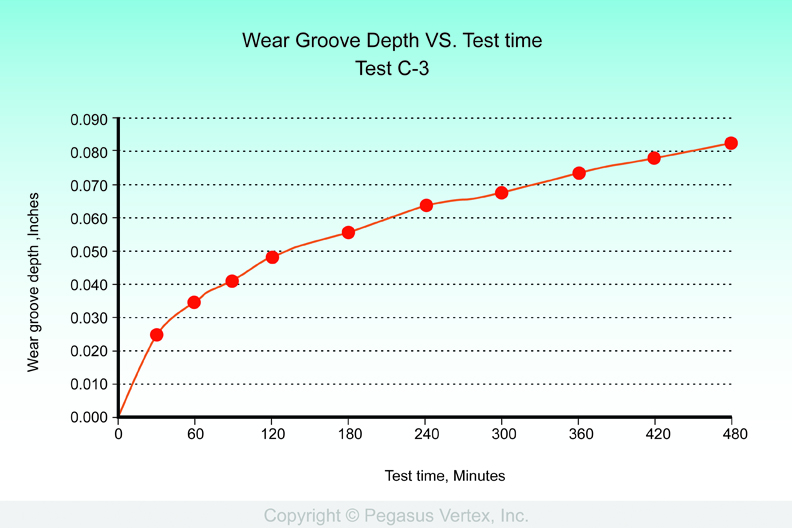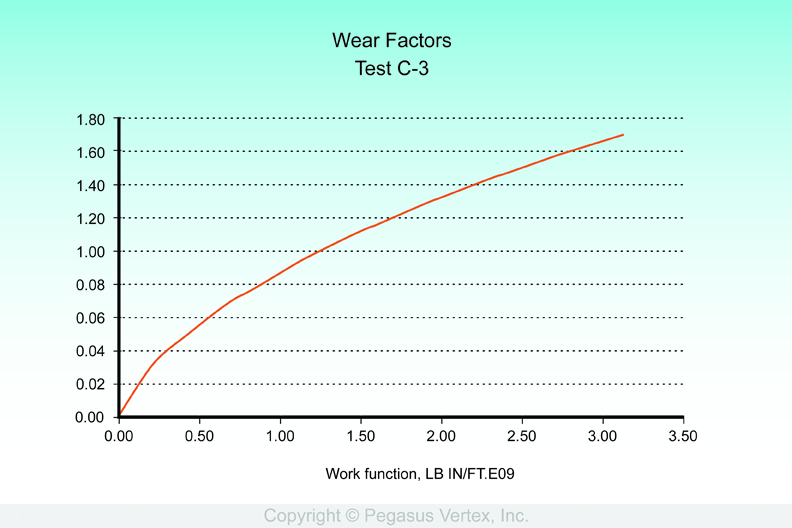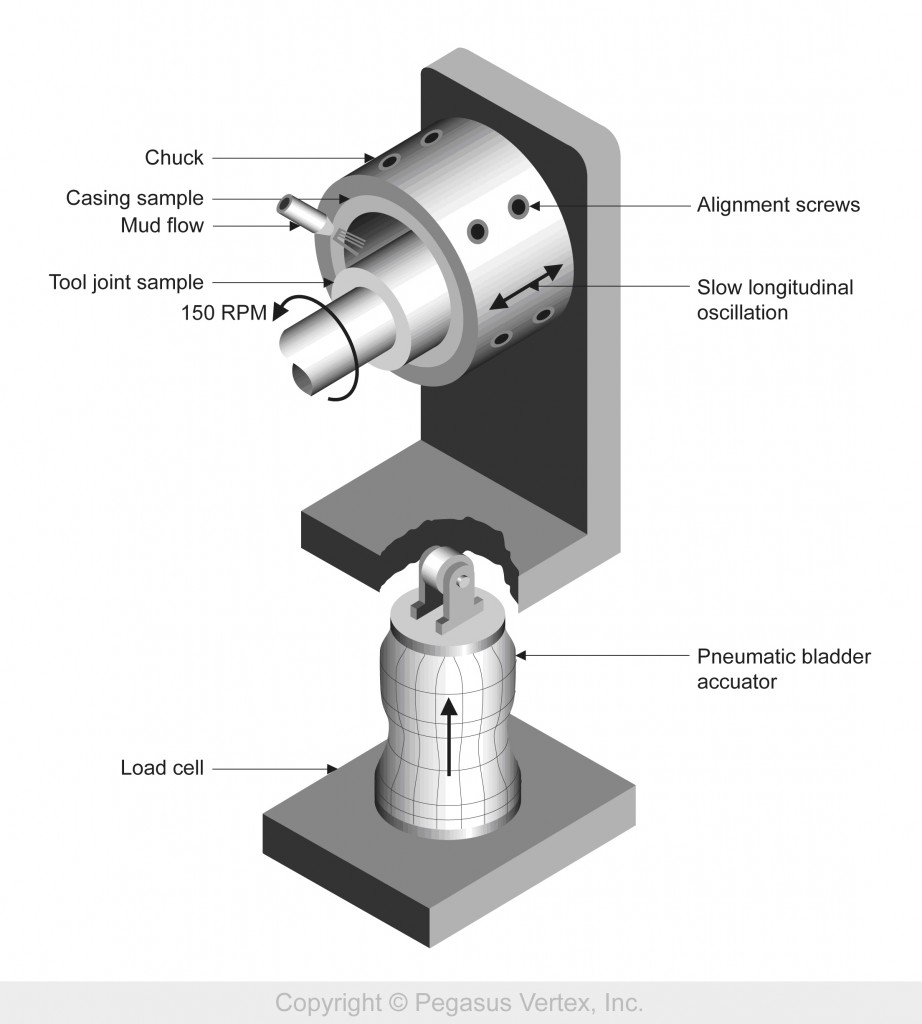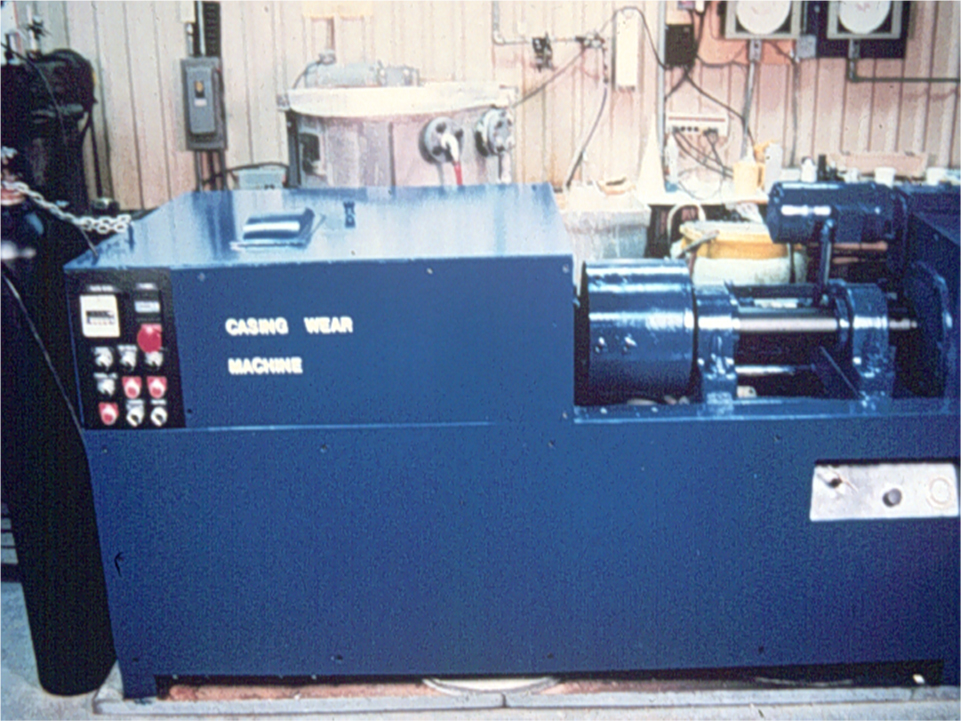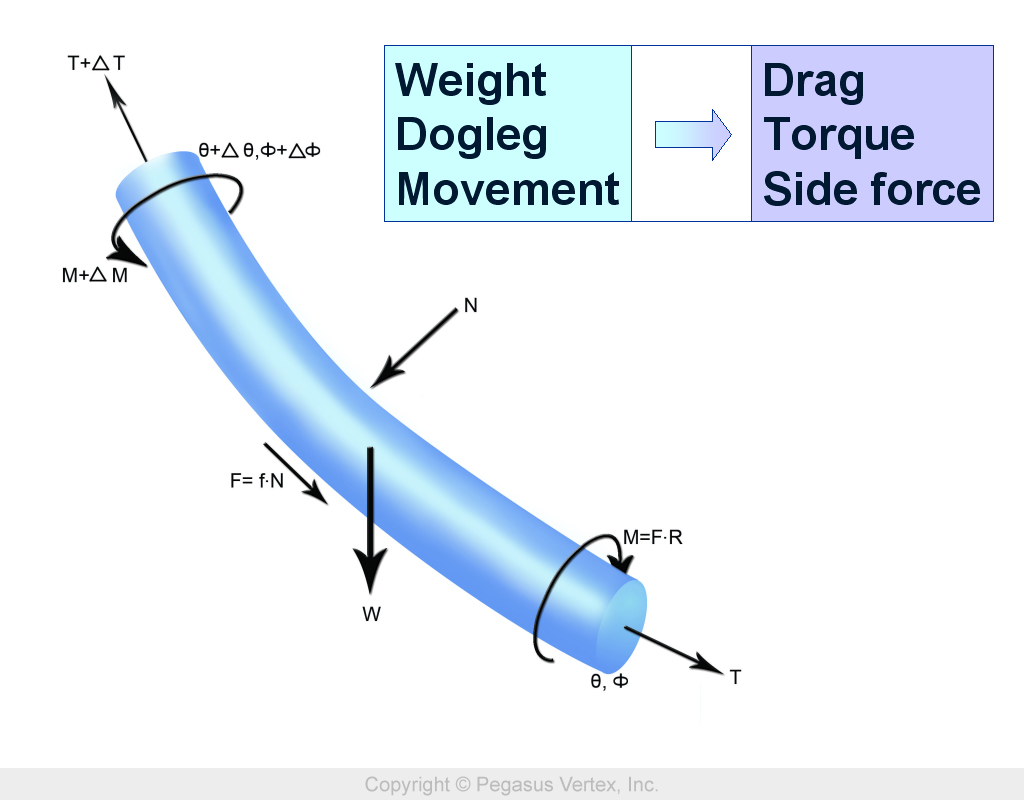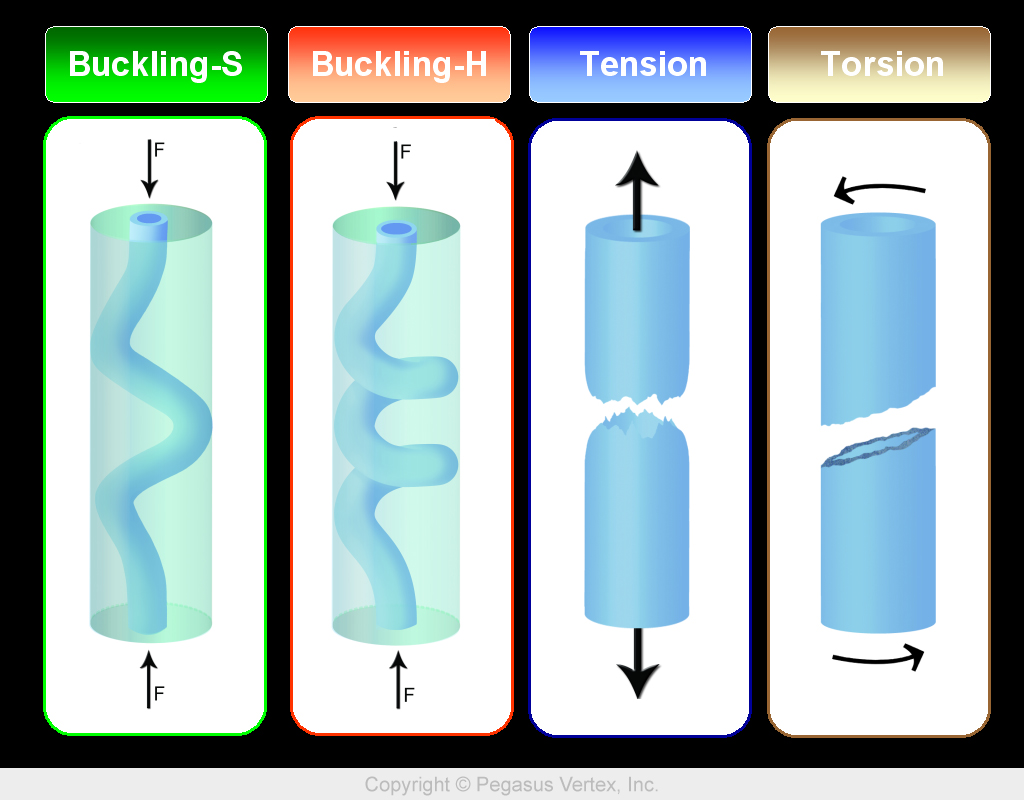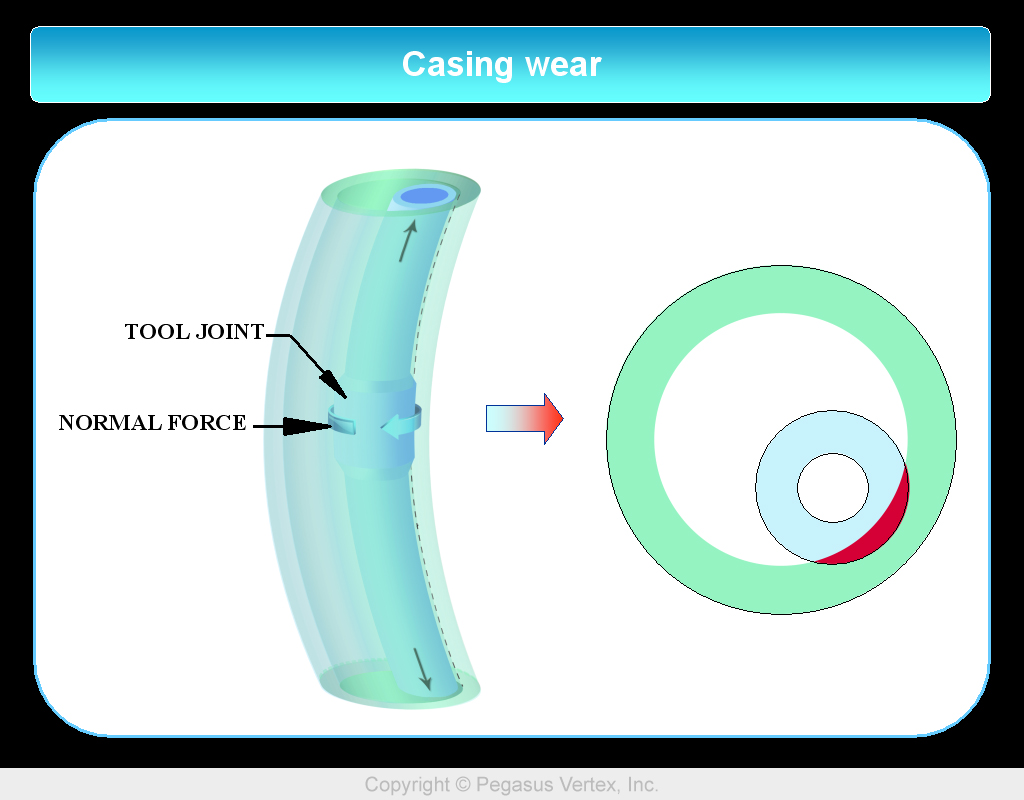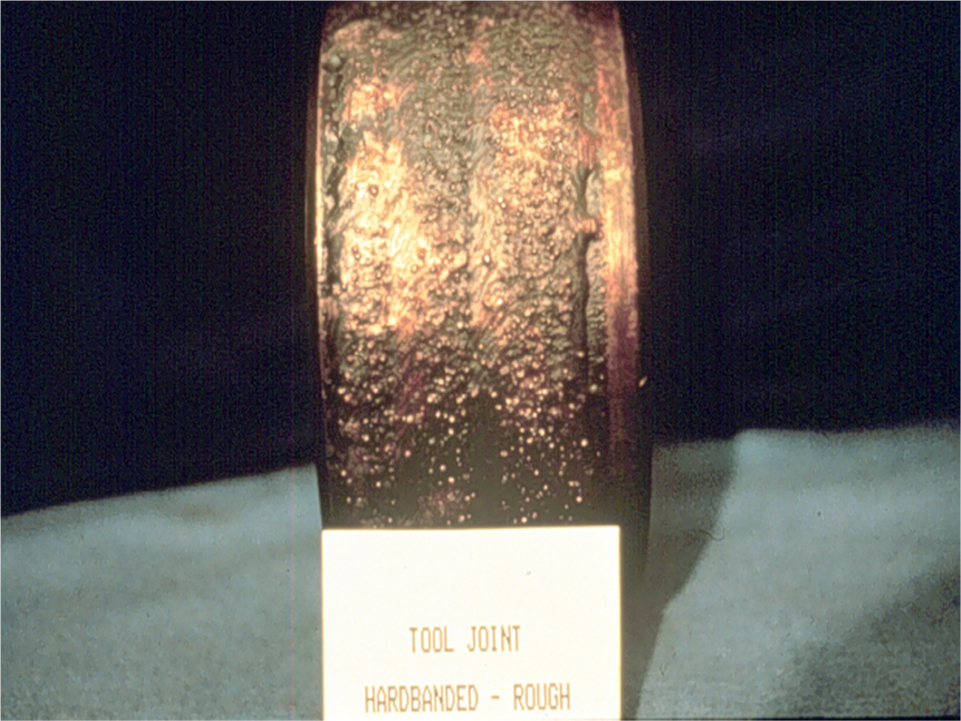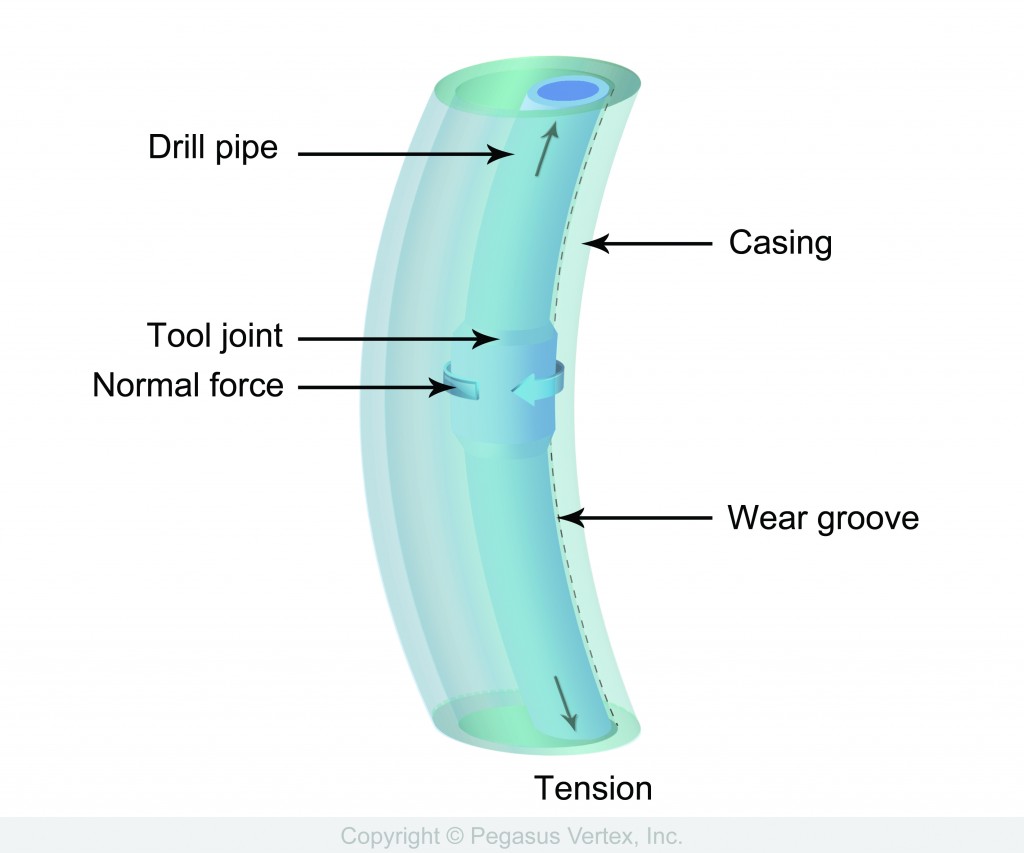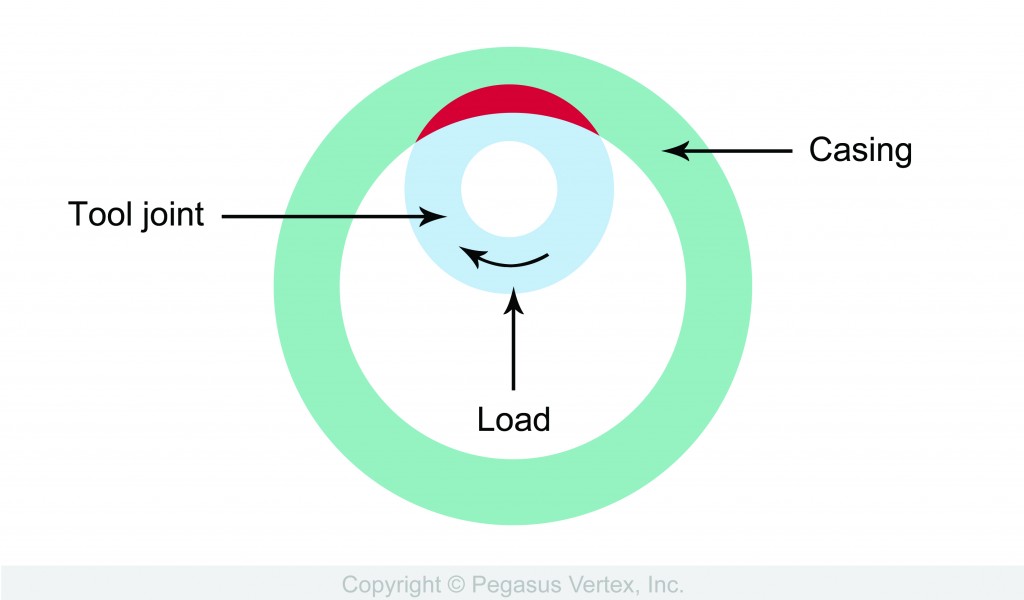Casing wear test data consists of a series of wear groove depths and the elapsed test times at which they were obtained. A data set from one such test is pictured in Figure 1.
Since it is desired to use these test results to predict the performance of casing wear systems with dimensions other than those used in the laboratory test (Different casing ID and tool joint dimensions), a model which is independent of the casing and tool joint dimensions was needed. Such a model was proposed by Dr. W. C. Maurer. His model was: The casing wear groove volume per unit length of casing is proportional to the work done per unit length on the casing by the tool joint. The constant of proportionality, called `Wear Factor’, was to be evaluated at the end of the 8 hour casing wear test, as shown in Figure 2.
Here, the performance of the casing wear system is characterized by a single number - the wear factor. This describes the performance of the casing wear system (consisting of casing, tool joint, and drilling fluid ) as linear. Obviously, this is not the case. But, the linear model greatly simplified the development of a mathematical procedure to predict the wear performance of a wear system in the field. This was the basis for several casing wear mathematical programs which are quite successful in predicting the casing wear to be expected in field drilling operations today. The difference between predictions based on the linear wear performance system and the real world non linear system is, in many cases, less than the uncertainty of wear data obtained in the field. Casing wear logs are costly and time consuming, and are not usually run on a routine basis.
CWPRO is a modern upgraded and improved descendent of these earlier casing wear programs.
Conversion from casing wear test data, ‘groove depth vs. elapsed time’, to ‘groove volume vs. frictional work’ is a straightforward mathematical operation based on the wear groove geometry shown in Figure 3.
From ‘groove volume vs. frictional work’ back to a ‘casing wear groove depth vs. rotating time’ is similarly straightforward, regardless of the geometry in the field operations.
Knowing the value of the wear factor, and applying the concept that casing wear groove volume is a universal function of frictional work done by the tool joint on the casing, allows us to convert from wear groove volume to wear groove depth for any combination of casing internal diameter and tool joint outside diameter. When applying the wear model to field drilling operations, the frictional work done by the tool joint on the casing is first determined. Applying the mathematical model to this information, allows the casing wear groove volume to be determined. Knowing the wear volume, and the inside diameter of the casing and the outside diameter of the tool joint (see Figure 3) we have all the information needed to determine the depth of the casing wear groove.
When the complete description of the wear system performance is needed, the differential wear factor shown in Figure 4 is used. The differential wear factor is the slope (derivative) of the wear groove volume vs. work function curve.

